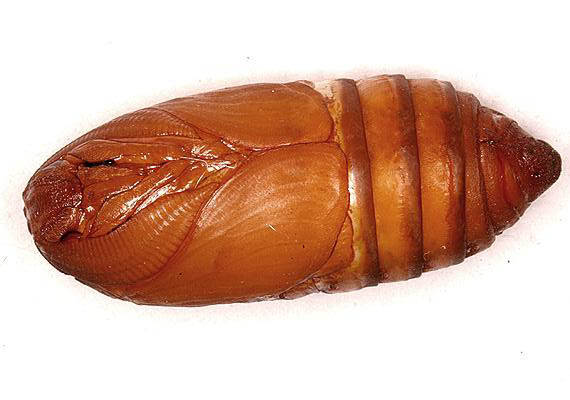 Larwy muchy plujki pod wpływem ciepła szybko przechodzą w stadium poczwarki. Nie stają się jednak bezwartościową przynętą.
Larwy muchy plujki pod wpływem ciepła szybko przechodzą w stadium poczwarki. Nie stają się jednak bezwartościową przynętą.
Moje pierwsze pozytywne doświadczenie z larwami muchy plujki (nazywanymi przez wędkarzy „białymi robakami”) miałem przed około 20-tu laty. Podczas zawodów wędkarskich otrzymałem miejsce na pomoście, znanym ze swego niekorzystnego położenia i łowiąc małe płotki, pocieszałem się ciepłymi promieniami słonecznymi. Podobnie musiały czuć się białe robaki w moim pojemniku na przynętę. Wiele z nich zaczęło przeistaczać się w poczwarki. Wyrzucając je do wody razem z zanętą wpadłem na pomysł użycia ich jako przynęty.
Bez dłuższego zastanowienia założyłem na haczyk jedną poczwarkę i jedną larwę, a później tylko dwie poczwarki. Po pewnym czasie złapałem najpierw dwie większe płotki, potem jednego za drugim, sześć dużych leszczy, straciłem podczas holu karpia i zostałem zwycięzcą. Od tego czasu poczwarki są dla mnie ważną przynęta na białą rybę. Przynętą ta w odróżnieniu od ruchliwych larw ma właściwości „wybiórcze”, ponieważ jeżeli zostanie przez ryby już raz zaakceptowana, to przyciąga przeważnie większe egzemplarze niż same larwy. Nęcąc kokonami, poczwarkami można ryby przyzwyczaić do tej przynęty. I tu mają poczwarki dużą przewagę nad ruchliwymi larwami, ponieważ leżą spokojnie na dnie i nie chowają się.
W toku rozwoju larw, zmniejsza się ich masa właściwa, tak że w pewnej ich porcji znajduje się zawsze parę, które nie toną. Utrzymując się na powierzchni wody, zwabiają one ryby z dalszych odległości na nasze łowisko. Ważne jest jednak, aby zawsze większa część zanęty opadła na dno, bo z kolei jeżeli wszystkie z nich odpłyną, odpłyną za nimi i ryby. Jak widzimy, białych robaków należy używać w odpowiednim ich stadium rozwoju, a to wymaga przygotowań. Na początek odrzucamy martwe, bądź przepoczwarzone już larwy, a pozostałe umieszczamy w płaskim, wypełnionym trocinami naczyniu i stawiamy je w piwnicy. Tylko w chłodzie i w ciemnościach odbywa się rozwój larw wystarczająco wolno. Świeże robaki (larwy) można rozpoznać po czarnej plamce pod skórą, która powoli zanika. W momencie, kiedy staje się ona niewidoczna, znajdują się one krótko przed przejściem w stadium poczwarki. W późniejszym czasie z poczwarki rozwinie się we wnętrzu kokonu dorosła mucha. Po ukazaniu się pierwszych poczwarek, przepuszczam robaki przez specjalne sito. Larwy przedostają się na dół, a w sitku pozostają tylko poczwarki. Rozwój larw należy teraz zatrzymać. W tym celu można je przechowywać w lodówce, w naczyniu z wodą. W ten sposób przy ciągłej zmianie wody, przetrwają one około 3 dni.
Zdecydowanie lepszym sposobem przechowywania larw jest umieszczenie ich w lodówce w szczelnie zamkniętym worku foliowy. Dobrze schłodzone i bez dostępu powietrza, przetrwają tam do tygodnia. Ponieważ larwy nigdy nie przeistaczają się jednocześnie, należy je „przecedzać” kilka razy dziennie. Po dwóch do trzech dni powinien być ten proces jednak zakończony. Nad wodą dodaję do pojemnika z larwami wodę, aby zapobiec dalszemu ich rozwojowi. Do przynęcania nadają się bowiem tylko tonące larwy o barwie od jasno-brązowej do brązowej. Nie tonące, kokony (poczwarki), gniotę i mieszam z zanętą. Angielscy specjaliści połowów białej ryby cenią sobie bardzo ten rodzaj zanęty. Ponadto nęcę też samymi larwami bez domieszki innych dodatków (wyrzut przy pomocy procy). Używam najdelikatniejszych zestawów, mało ołowiu i 1-2 robaki na haczyku, które dzięki temu opadają tak samo wolno w wodzie jak sama zanęta. Do połowu na grunt, z koszyczkiem do zanęcania „telewizorkiem” lub w ulubionym systemie ze spławikiem, nasze larwy i poczwarki z pewnością są doskonałą przynętą na duże płocie, leszcze i klenie.
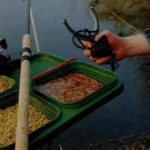
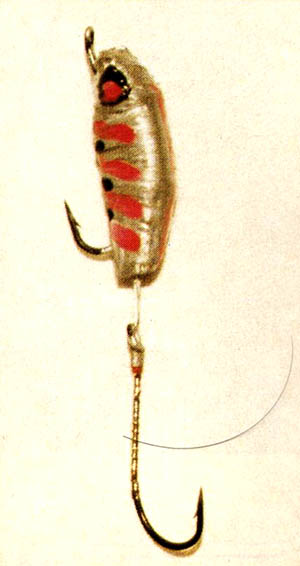
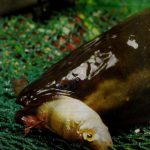

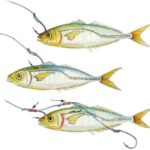
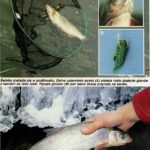
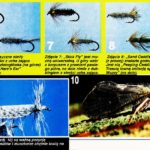
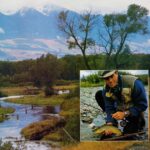
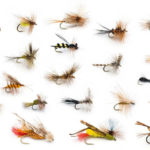
Hej, moim zdaniem na zdjęciu jest poczwarka zamknięta jakiegoś motyla, nie larwa i nie muchy.